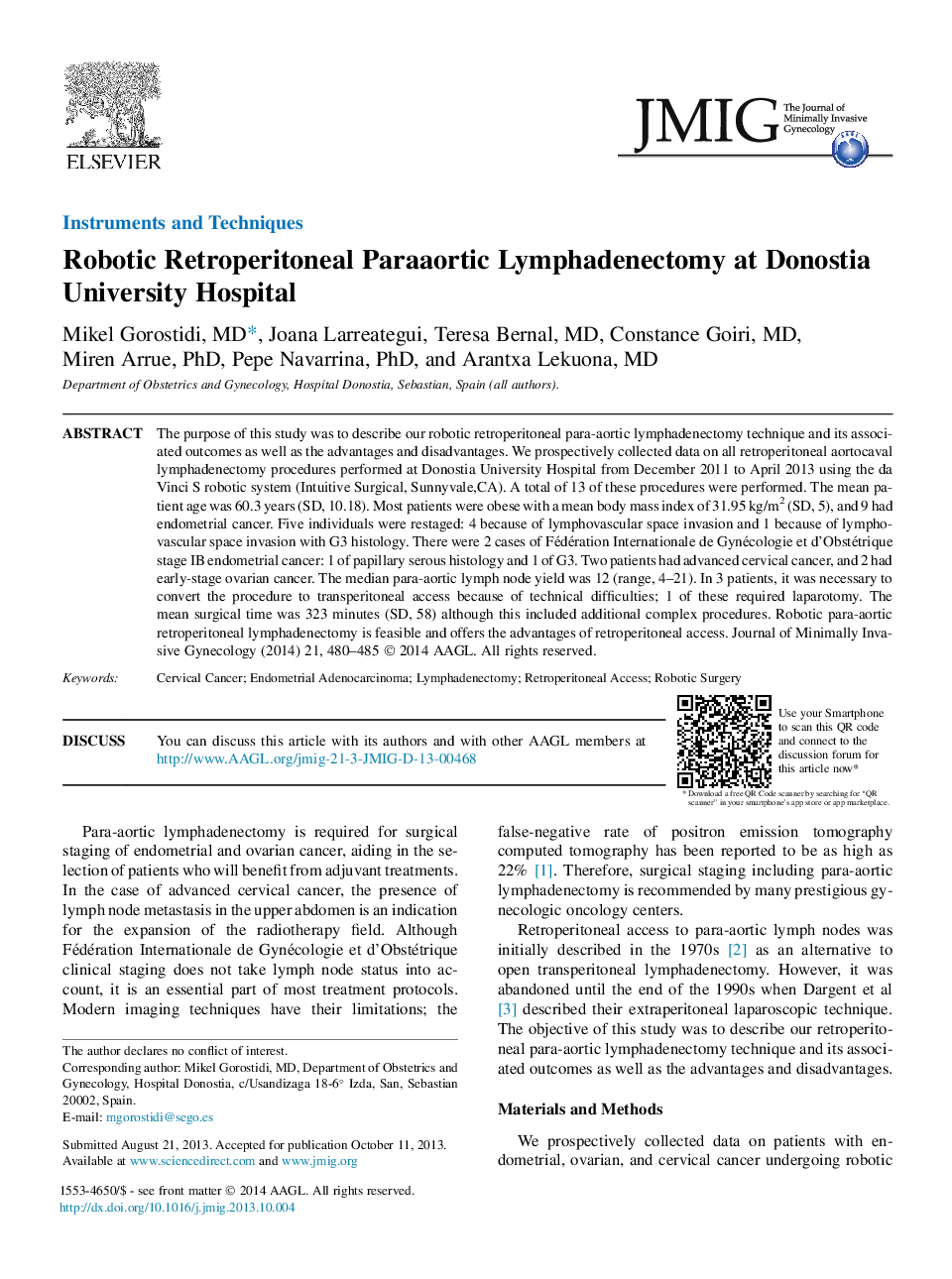| Article ID | Journal | Published Year | Pages | File Type |
|---|---|---|---|---|
| 3956465 | Journal of Minimally Invasive Gynecology | 2014 | 6 Pages |
Abstract
The purpose of this study was to describe our robotic retroperitoneal para-aortic lymphadenectomy technique and its associated outcomes as well as the advantages and disadvantages. We prospectively collected data on all retroperitoneal aortocaval lymphadenectomy procedures performed at Donostia University Hospital from December 2011 to April 2013 using the da Vinci S robotic system (Intuitive Surgical, Sunnyvale,CA). A total of 13 of these procedures were performed. The mean patient age was 60.3 years (SD, 10.18). Most patients were obese with a mean body mass index of 31.95 kg/m2 (SD, 5), and 9 had endometrial cancer. Five individuals were restaged: 4 because of lymphovascular space invasion and 1 because of lymphovascular space invasion with G3 histology. There were 2 cases of Fédération Internationale de Gynécologie et d'Obstétrique stage IB endometrial cancer: 1 of papillary serous histology and 1 of G3. Two patients had advanced cervical cancer, and 2 had early-stage ovarian cancer. The median para-aortic lymph node yield was 12 (range, 4-21). In 3 patients, it was necessary to convert the procedure to transperitoneal access because of technical difficulties; 1 of these required laparotomy. The mean surgical time was 323 minutes (SD, 58) although this included additional complex procedures. Robotic para-aortic retroperitoneal lymphadenectomy is feasible and offers the advantages of retroperitoneal access.
Related Topics
Health Sciences
Medicine and Dentistry
Obstetrics, Gynecology and Women's Health
Authors
Mikel MD, Joana Larreategui, Teresa MD, Constance MD, Miren PhD, Pepe PhD, Arantxa MD,
